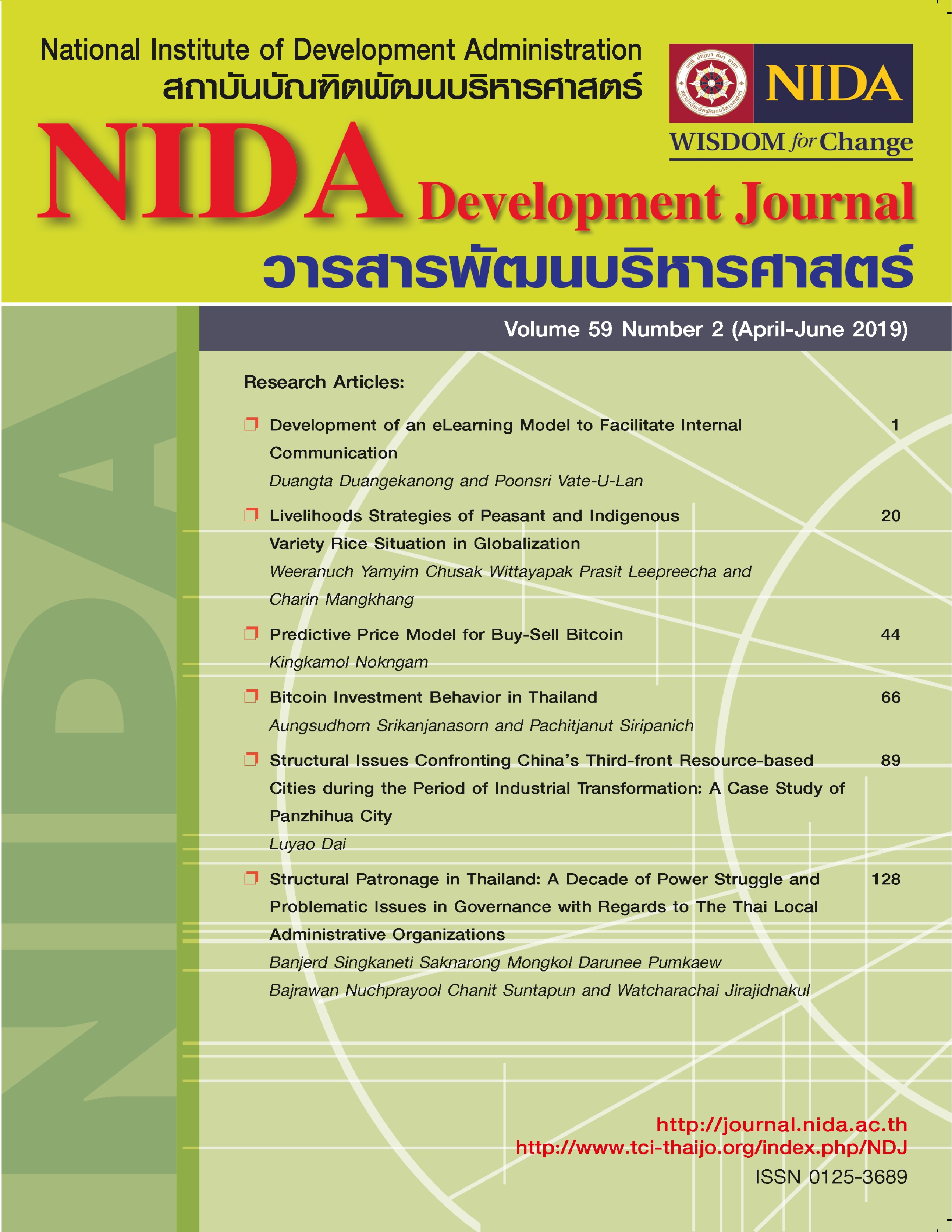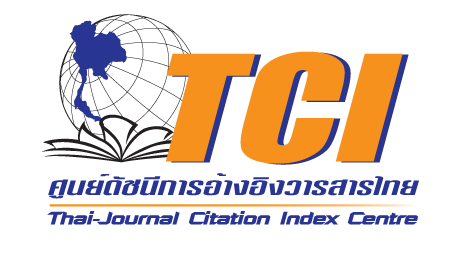Structural Issues Confronting China’s Third-front Resource-based Cities during the Period of Industrial Transformation: A Case Study of Panzhihua City
Keywords:
Third-front Construction, China’s resource-based cities, Industrial transformationAbstract
China’s Third-front Construction was an immense movement which had a substantial influence on the country. The movement had two significant impacts on China, firstly, it improved the country’s strategic industrial structure; secondly, it enhanced China’s national defense industries. However, the decline of Third-front Enterprises and Third-front Resource-based Cities was due not only to economic causes but also political causes. Through a case study of typical Third-front Enterprises and a typical Third-front Resource-based City, Panzhihua city, Sichuan Province, that includes 13 in-depth interviews and 331 questionnaires, it was found that there were three structural problems encountered in the transformation of Third-front Resource-based Cities, namely: the locational disadvantage resulting from locating industry in remote areas; the operational disadvantage caused by poor management; and the market disadvantage caused by institutional issues. The situation was the result of the conflict of the three dichotomies of ideas, namely, war and peace; planned economy and market economy; and public ownership and private ownership.
References
Caihua, L. (2011). A review of the research on the Third-front Construction. Social Sciences Front, 10, 98-102.
Caixia, W. (2016). Research on the economic transformation of Resource-based Cities under the New Normal Situation. Modern Management Science, 10, 85-87.
Cardinal, L. B., Sitkin, S. B., & Long. C. P. (2004). Balancing and rebalancing in the creation and evolution or organizational control. Organization Science, 15, 411-431.
Division of Fixed Assets Investment of National Statistics Bureau. (1997). Statistical yearbook of China’s fixed assets investment (1950-1995). Beijing, China: Statistics Publishing House.
Donglin, C. (2003). The Third-front Construction: The western development in the period of preparation for war. Beijing, China: Communist Party School Press.
Donglin, C. (2016). Seizing the opportunities of supply-side reform and military-civilian integration to promote the protection and utilization of Third-front heritage. Guizhou Social Sciences, 322(10), 30-35.
Eisenhardt, K. M. (1989). Building theories from case study research. Academy of Management Review, 14, 532-550.
General Office of the State Council. (2013). National Resource-cities sustainable development plan (2013-2020). Retrieved December 3, 2013 from http//www.
gov.cn/zwgk/2013-12/03/content_2540070.htm.
Group on “Third Line Construction” and Panzhihua in the Development of the Western Region. (2013). A practice to make the Chinese dream come true: Vivid interpretation of Chinese experience by reform and development of Panzhihua iron and steel based research. Teaching and Research, 9, 5-13.
Guang, X. (1992). National defense science and technology in contemporary China (I). Beijing, China: Contemporary China Press.
Haitao, Z. (2011). The influence of the CPC’s regional development ideas to the Three-line Construction and adjustment and reform. Journal of Northeast Normal University, 251(3), 5-7.
Haojv, H., Renzhong, H., & Jiagui, X. (2003). The Third-front Construction and the western development. Beijing, China: Contemporary China Press.
Huijuan, L., Ruyin, L., & Hong, C. (2013). Economic transition policies in Chinese Resource-based Cities: An overview of government efforts. Energy Policy, 55, 251-260
Jiangsu, L., & Zhipeng, T. (2017). An analysis of industrial structure increase of regenerative Resource-based Cities: A case of Tangshan City. Geographical Research, 36(4), 707-718.
Li, Y., Chunmei, J., & Zuo, Y. (2008). Research on industrial transformation of resource-exhausted cities. Beijing, China: China Academy of Social Sciences Press.
Liping, Y. (2017). Long-term mechanism for sustainable development of Resource-based Cities in the midwest and east China. Reform, 282(8), 110-114.
Lvhong, L. (2014). The historical development and transformation of Resource-based Cities in China. Journal of Southwest University for Nationalities, 10, 151-155.
Miles, M. B., & Huberman, A. M. (1994). Qualitative data analysis. Thousand Oaks, CA: Sage.
Miller, C. C., Cardinal, L. B., & Glick, W. H. (1997). Retrospective reports in organizational research: A reexamination of recent evidence. Strategic Management Journal, 40, 189.
Minliang, Z. (2000). The history review and policy consideration of developing west China. World SCI-TECH R&D, 22(4), 72-76.
Panzhihua Statistical Bureau. (2017). Panzhihua statistical yearbook 2017. Panzhihua, China: Statistical Bureau of Panzhihua City.
People’s Government of Panzhihua Municipal. (2019). Panzhihua administrative district map. Retrieved September 5, 2019 from http://www.panzhihua.gov.cn/zjpzh/zrgk/xzqh/ index.shtml
Quanshan, M. (2011). The issue on the evaluation of Third-line Construction. Contemporary China History Study, 18(6), 63-70.
Van Maanen, J. (1988). Tales of the field. Chicago, IL: University of Chicago Press.
Xiangang, Z., & Cunru, D. (2018). Performance evaluation and differential analysis on green transformation of coal resource-exhausted cities in China. China Population, Resources and Environment, 28(7), 127-135.
Xiaoyong, S., & Li, W. (2016). On the interaction between China’s defense industry and the economic development (1949-2015). Research in Chinese Economic History, 5, 93-101.
Xuejie, Y., Li, L., & Xiaolei, W. (2018). Economic geology and the path of industrial transformation in Resource-based Cities: A case study of Huainan city. China Soft Science, 2, 186-192.
Xuexin, L., Guangzeng, T., & Changhong, M. (2010). The regional central urban economic transformation: Mechanism and mode. Urban Studies, 17(4), 26-32.
Yan, X. (1999), “Revolution and war” or peace and development: China’s understanding of the characteristics of the times in the past 50 years. Centennial Tide, 3, 34-42.
Yong, Z. (2018). History writing and public participation: An investigation centered on the Third-front Construction. Southeast Academy, 2, 223-232.
Yougui, Z., & Hongchun, Z. (2013). Panzhihua in the Third-front Construction and the great western development. Beijing, China: Contemporary Chinese Communist Publishing House.
Youwei, X., & Xi, C. (2015). The impact of Third line Construction on China’s industrial economy and urbanization. Contemporary China History Studies, 22(4), 81-92.
Yuming, S., Binbin, Y., & Yun, Z. (2006). Study on the eco environmental problems and its countermeasure in the sustainable development of resources based cities: A case study of Jining City. Geographical Research, 25(3), 430-438.
Zhiyi, N. (2000). From historical comparation, see Sichuan’s “Leaping-over Style” development. History of C.P.C., Sichuan, 184(4), 18-25.
Downloads
Published
How to Cite
Issue
Section
License

This work is licensed under a Creative Commons Attribution-NonCommercial-NoDerivatives 4.0 International License.





